-
 Bitcoin
Bitcoin $83,692.3503
0.83% -
 Ethereum
Ethereum $1,817.6072
1.05% -
 Tether USDt
Tether USDt $0.9997
-0.01% -
 XRP
XRP $2.1571
4.64% -
 BNB
BNB $597.9442
0.92% -
 Solana
Solana $121.3486
4.34% -
 USDC
USDC $1.0000
0.01% -
 Dogecoin
Dogecoin $0.1701
3.73% -
 Cardano
Cardano $0.6627
2.07% -
 TRON
TRON $0.2366
-0.80% -
 Chainlink
Chainlink $12.9968
1.79% -
 UNUS SED LEO
UNUS SED LEO $8.9254
-4.67% -
 Toncoin
Toncoin $3.2910
-5.61% -
 Stellar
Stellar $0.2571
-0.87% -
 Avalanche
Avalanche $18.2770
1.18% -
 Sui
Sui $2.2536
2.53% -
 Shiba Inu
Shiba Inu $0.0...01238
1.05% -
 Hedera
Hedera $0.1630
0.81% -
 Litecoin
Litecoin $83.8930
0.33% -
 Polkadot
Polkadot $4.0032
-0.63% -
 MANTRA
MANTRA $6.2613
-0.60% -
 Bitcoin Cash
Bitcoin Cash $303.7265
-0.19% -
 Bitget Token
Bitget Token $4.5099
0.36% -
 Dai
Dai $1.0001
0.01% -
 Ethena USDe
Ethena USDe $0.9990
-0.06% -
 Pi
Pi $0.6727
25.93% -
 Hyperliquid
Hyperliquid $12.0801
5.29% -
 Monero
Monero $216.8337
0.33% -
 Uniswap
Uniswap $5.9215
0.58% -
 OKB
OKB $51.4710
9.89%
How is the gaming asset class performing in the NFT market?
Gaming NFTs, including in-game items and virtual real estate, have driven significant market growth, with platforms like Axie Infinity leading the way.
Apr 03, 2025 at 06:35 pm
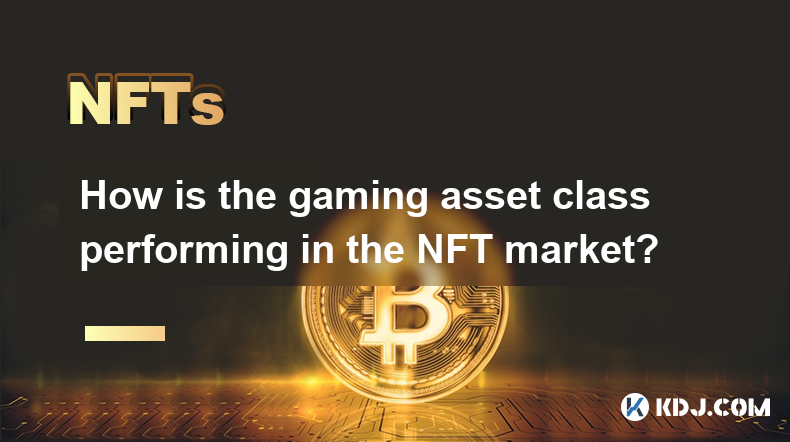
The performance of the gaming asset class within the NFT (Non-Fungible Token) market has been a topic of significant interest and analysis in recent years. As the cryptocurrency and blockchain technology sectors continue to evolve, NFTs have carved out a niche that blends digital ownership with the entertainment and gaming industries. This article delves into the current state of gaming assets in the NFT market, exploring trends, key players, and future prospects.
Market Overview
The NFT market has seen explosive growth since 2020, with gaming assets becoming one of the most prominent categories. Gaming NFTs include in-game items, characters, skins, and virtual real estate, which players can buy, sell, and trade. According to recent data, the gaming sector within NFTs has been a significant driver of market volume and value. In 2021, the total sales volume for gaming NFTs reached billions of dollars, showcasing the sector's robust growth and investor interest.
Key Players and Projects
Several projects and platforms have emerged as leaders in the gaming NFT space. Axie Infinity stands out as one of the most successful, with its play-to-earn model allowing players to earn cryptocurrency by playing the game. Another notable project is Decentraland, which offers virtual land and property that users can buy and develop. The Sandbox also provides a platform for users to create, own, and monetize gaming experiences using NFTs. These platforms have not only attracted gamers but also investors looking to capitalize on the growing trend of digital asset ownership.
Trends in Gaming NFTs
Several trends have emerged within the gaming NFT market. One significant trend is the rise of play-to-earn models, where players can earn real-world value from their in-game activities. This model has attracted a diverse player base, particularly in regions where economic opportunities are limited. Another trend is the integration of interoperability, allowing gaming assets to be used across different platforms and games. This enhances the utility and value of NFTs, as players can leverage their assets in multiple gaming ecosystems.
Challenges and Risks
Despite the promising growth, the gaming NFT market faces several challenges and risks. Volatility in cryptocurrency prices can significantly impact the value of gaming NFTs. Additionally, regulatory uncertainty remains a concern, as governments worldwide grapple with how to classify and regulate NFTs. Security issues such as hacks and scams also pose risks to investors and players. Furthermore, the sustainability of play-to-earn models is questioned, as the influx of new players can dilute earnings over time.
Future Prospects
Looking ahead, the future of gaming assets in the NFT market appears promising but uncertain. As technology continues to evolve, we can expect to see more sophisticated gaming experiences and more seamless integration of NFTs. Blockchain interoperability and scalability improvements could further enhance the utility and adoption of gaming NFTs. Moreover, as more mainstream games adopt NFT technology, the market could see increased legitimacy and broader acceptance. However, the market's trajectory will depend on addressing current challenges and adapting to the evolving regulatory landscape.
Impact on Traditional Gaming
The rise of gaming NFTs has also had a notable impact on traditional gaming. Many traditional game developers are exploring or have already integrated NFTs into their games. This shift could potentially disrupt the existing gaming industry, as it introduces new revenue models and player engagement strategies. However, it also raises concerns about the potential for pay-to-win scenarios and the impact on game balance and fairness. As a result, traditional gaming companies must carefully navigate the integration of NFTs to maintain their player base's trust and satisfaction.
Investment Opportunities
For investors, the gaming NFT market offers various opportunities but also comes with significant risks. Diversification across different gaming projects and platforms can help mitigate risk. Research is crucial, as understanding the fundamentals of each project, including its team, technology, and community, can inform investment decisions. Long-term potential should also be considered, as the market's growth trajectory suggests that early investments could yield substantial returns. However, investors must remain vigilant about market volatility and regulatory changes that could impact their investments.
Community and Culture
The gaming NFT market has also fostered a vibrant community and culture. Online forums, social media, and Discord channels dedicated to gaming NFTs have become hubs for enthusiasts to share insights, strategies, and experiences. This sense of community not only enhances the gaming experience but also drives the adoption and growth of NFTs. Additionally, cultural events such as NFT gaming tournaments and virtual art exhibitions have further cemented the role of gaming NFTs in the broader digital culture.
Technological Advancements
Technological advancements play a crucial role in the evolution of gaming NFTs. Blockchain technology underpins the security and transparency of NFTs, ensuring that ownership and transactions are verifiable and immutable. Smart contracts automate the execution of transactions and the distribution of rewards, enhancing the efficiency of play-to-earn models. Layer 2 solutions and sidechains are being developed to address scalability issues, allowing for faster and cheaper transactions. These technological improvements are essential for the continued growth and adoption of gaming NFTs.
Environmental Concerns
The environmental impact of NFTs, particularly those on energy-intensive blockchains like Ethereum, has been a point of contention. Energy consumption associated with mining and transaction validation has raised concerns about the sustainability of NFTs. In response, some gaming NFT projects are exploring or have already transitioned to more energy-efficient blockchains like Polygon and Flow. Additionally, carbon offset programs and green initiatives are being implemented to mitigate the environmental footprint of gaming NFTs. These efforts are crucial for addressing public concerns and ensuring the long-term viability of the market.
Economic Implications
The economic implications of gaming NFTs are multifaceted. Decentralized economies within gaming ecosystems can create new opportunities for wealth generation and financial inclusion. Players from around the world can participate in these economies, earning cryptocurrency that can be converted into real-world value. However, this also introduces economic risks, such as inflation and market saturation. Regulatory frameworks will play a critical role in shaping these decentralized economies, as governments seek to balance innovation with consumer protection and financial stability.
Case Studies
Examining specific case studies can provide insights into the performance and potential of gaming NFTs. Axie Infinity serves as a prime example of a successful gaming NFT project. Launched in 2018, Axie Infinity has grown to become one of the most popular play-to-earn games, with millions of users and billions in trading volume. The game's success can be attributed to its engaging gameplay, strong community, and the economic incentives it provides to players. Decentraland offers another case study, with its virtual world attracting significant investment and user engagement. These examples illustrate the diverse ways in which gaming NFTs can create value and drive market growth.
User Experience
The user experience is a critical factor in the adoption and success of gaming NFTs. Ease of use and accessibility are essential for attracting a broad user base. Many gaming NFT platforms have developed user-friendly interfaces and streamlined onboarding processes to reduce barriers to entry. Customer support and community engagement also play vital roles in enhancing the user experience. Platforms that prioritize these aspects are more likely to retain users and foster a loyal community. As the market matures, we can expect to see further improvements in user experience, making gaming NFTs more accessible and enjoyable for players of all levels.
Market Dynamics
Understanding the market dynamics of gaming NFTs is crucial for both participants and observers. Supply and demand dynamics can significantly influence the value of gaming assets. Market sentiment, driven by factors such as project announcements, partnerships, and broader cryptocurrency trends, also plays a role. Liquidity is another important consideration, as it affects the ease with which users can buy and sell their assets. Platforms that offer robust marketplaces and trading mechanisms tend to be more attractive to users and investors. Monitoring these dynamics can help stakeholders make informed decisions and navigate the market more effectively.
Regulatory Landscape
The regulatory landscape for gaming NFTs is evolving and varies significantly by jurisdiction. Securities regulations, anti-money laundering (AML) laws, and consumer protection regulations are among the key areas of focus for regulators. Some countries have taken a more permissive approach, fostering innovation in the NFT space, while others have imposed stricter regulations to protect consumers and ensure market integrity. Self-regulatory initiatives by industry players are also emerging, aiming to establish best practices and standards. As the market continues to grow, navigating the regulatory landscape will be crucial for the long-term sustainability of gaming NFTs.
Social Impact
The social impact of gaming NFTs extends beyond the economic realm. Financial empowerment for players, particularly in developing countries, is one of the most significant social benefits. Community building and social interaction within gaming ecosystems can also enhance social connections and foster a sense of belonging. However, there are also potential negative social impacts, such as addiction and financial risk associated with speculative investments. Balancing these factors will be essential for ensuring that gaming NFTs contribute positively to society.
FAQs
What are gaming NFTs?
Gaming NFTs are non-fungible tokens that represent in-game assets such as characters, items, skins, and virtual real estate. These assets are unique and can be bought, sold, and traded on blockchain-based platforms.
How do play-to-earn models work?
Play-to-earn models allow players to earn cryptocurrency or other digital assets by participating in gameplay. These rewards can be sold or traded, providing players with a potential source of income.
What are the risks associated with investing in gaming NFTs?
Investing in gaming NFTs carries risks such as market volatility, regulatory uncertainty, security issues, and potential market saturation. Investors should conduct thorough research and consider diversification to mitigate these risks.
How can gaming NFTs impact traditional gaming?
Gaming NFTs can introduce new revenue models and player engagement strategies to traditional gaming. However, they also raise concerns about game balance and fairness, requiring careful integration to maintain player trust.
What technological advancements are driving the growth of gaming NFTs?
Technological advancements such as blockchain technology, smart contracts, and layer 2 solutions are crucial for the growth of gaming NFTs. These technologies enhance security, transparency, and scalability, making NFTs more viable for gaming applications.
What are the environmental concerns associated with gaming NFTs?
The environmental concerns stem from the energy consumption associated with blockchain networks. Some projects are addressing this by transitioning to more energy-efficient blockchains and implementing carbon offset programs.
How can the user experience be improved in gaming NFT platforms?
Improving the user experience involves enhancing ease of use, accessibility, customer support, and community engagement. Platforms that prioritize these aspects are more likely to attract and retain users.
What are the economic implications of gaming NFTs?
Gaming NFTs can create decentralized economies, offering new opportunities for wealth generation and financial inclusion. However, they also introduce economic risks such as inflation and market saturation, which need to be managed through regulatory frameworks.
How do market dynamics influence the value of gaming NFTs?
Market dynamics such as supply and demand, market sentiment, and liquidity can significantly influence the value of gaming NFTs. Understanding these dynamics is crucial for making informed investment and trading decisions.
What is the current regulatory landscape for gaming NFTs?
The regulatory landscape for gaming NFTs varies by jurisdiction and includes securities regulations, AML laws, and consumer protection regulations. Some countries are more permissive, while others impose stricter regulations. Self-regulatory initiatives are also emerging to establish industry standards.
Disclaimer:info@kdj.com
The information provided is not trading advice. kdj.com does not assume any responsibility for any investments made based on the information provided in this article. Cryptocurrencies are highly volatile and it is highly recommended that you invest with caution after thorough research!
If you believe that the content used on this website infringes your copyright, please contact us immediately (info@kdj.com) and we will delete it promptly.
- title: Dogecoin (DOGE) Shows Resilience Despite Bitcoin (BTC) and Altcoin Market Downturn
- 2025-04-05 18:20:12
- Fartcoin (STPT) Down After Explosive Rally as Investors Take Profits
- 2025-04-05 18:20:12
- NodeOps Network Unveils Innovative Pre-Sale Price Discovery Mechanism
- 2025-04-05 18:15:12
- MIND of Pepe Presale Closes On $8 Million – Next Crypto To Explode?
- 2025-04-05 18:15:12
- The Next Bitcoin Treasury Company May Not Be a U.S. Tech Giant
- 2025-04-05 18:10:12
- Market Greed Turns to Bloodbath as Nearly $300M Worth of Perpetual Futures Positions Get Liquidated
- 2025-04-05 18:10:12
Related knowledge
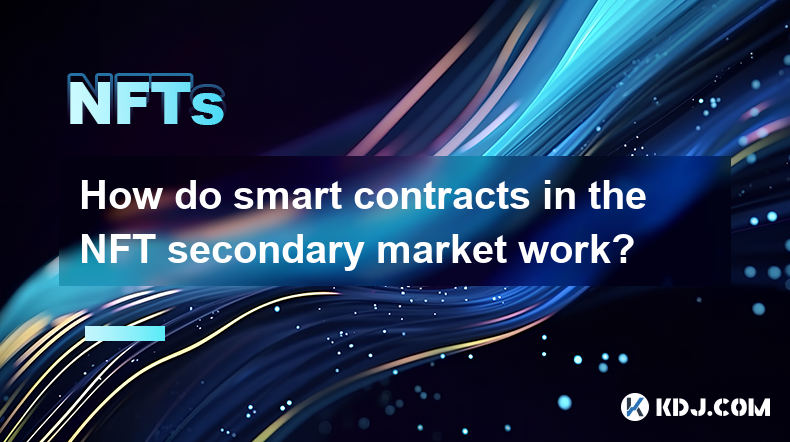
How do smart contracts in the NFT secondary market work?
Apr 03,2025 at 07:14am
Smart contracts play a pivotal role in the NFT secondary market, facilitating seamless transactions and enforcing predefined rules. These self-executing contracts with the terms of the agreement directly written into code are stored on the blockchain. In the context of NFTs, smart contracts automate the buying, selling, and transferring of digital asset...
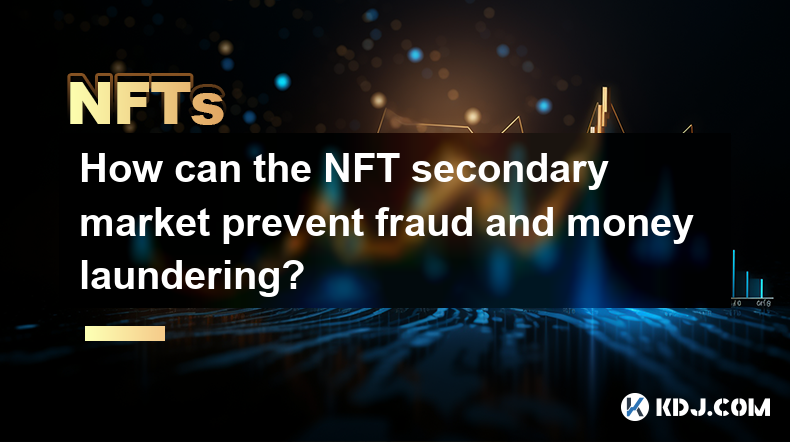
How can the NFT secondary market prevent fraud and money laundering?
Apr 03,2025 at 08:35am
The NFT secondary market has become a thriving hub for digital art and collectibles, but it also faces challenges in preventing fraud and money laundering. To tackle these issues, the market can implement various strategies and technologies to ensure a safer and more transparent trading environment. This article will explore how the NFT secondary market...

How are transaction fees in the NFT secondary market calculated?
Apr 04,2025 at 05:28am
The calculation of transaction fees in the NFT secondary market is a crucial aspect that both buyers and sellers need to understand. These fees can significantly impact the overall cost of transactions and the profits that sellers can make. In this article, we will delve into the various components that make up these fees, how they are calculated, and w...
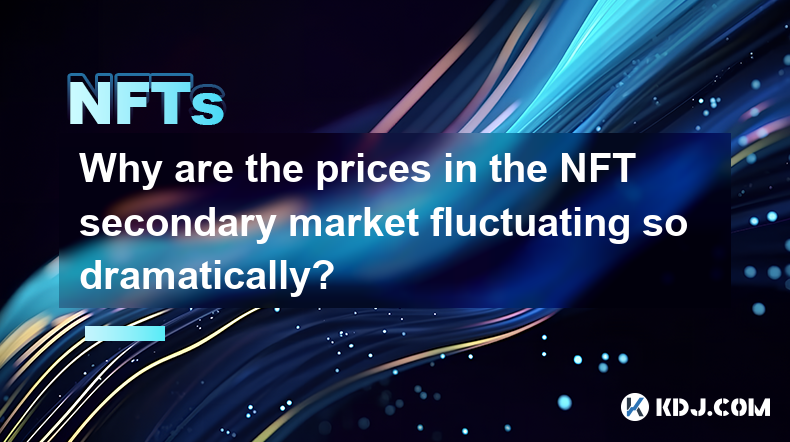
Why are the prices in the NFT secondary market fluctuating so dramatically?
Apr 03,2025 at 10:35pm
The NFT secondary market has been experiencing dramatic price fluctuations, leaving many in the cryptocurrency community puzzled and curious. To understand this phenomenon, it's essential to delve into the factors driving these price movements. From the impact of market sentiment and celebrity endorsements to the role of speculation and the unique natur...
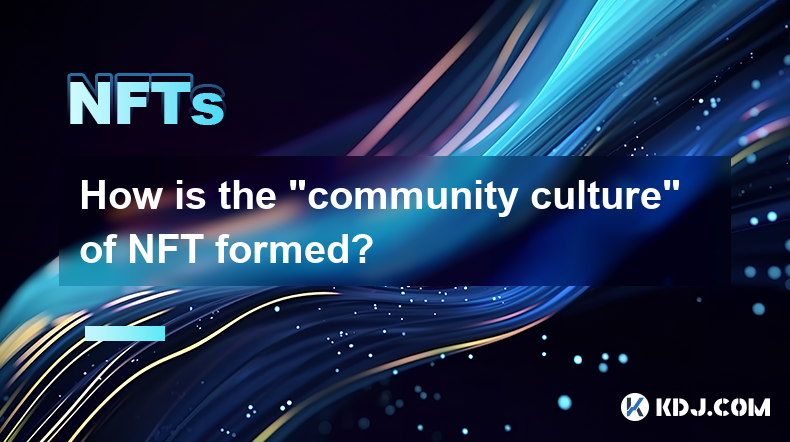
How is the “community culture” of NFT formed?
Apr 03,2025 at 11:07am
The formation of the 'community culture' within the NFT (Non-Fungible Token) space is a fascinating and multi-faceted process. It involves various elements such as shared interests, active engagement, and the creation of a sense of belonging among members. NFT communities often revolve around specific projects or artists, fostering a unique environment ...
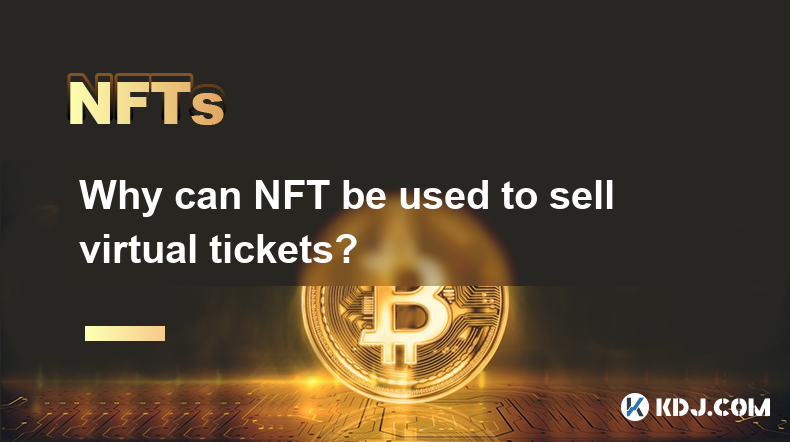
Why can NFT be used to sell virtual tickets?
Apr 03,2025 at 01:35pm
NFTs, or Non-Fungible Tokens, have revolutionized the way we think about digital ownership and value, particularly in the realm of virtual tickets. The primary reason NFTs can be used to sell virtual tickets is their unique nature. Unlike cryptocurrencies such as Bitcoin or Ethereum, which are fungible and can be exchanged on a one-to-one basis, NFTs ar...

How do smart contracts in the NFT secondary market work?
Apr 03,2025 at 07:14am
Smart contracts play a pivotal role in the NFT secondary market, facilitating seamless transactions and enforcing predefined rules. These self-executing contracts with the terms of the agreement directly written into code are stored on the blockchain. In the context of NFTs, smart contracts automate the buying, selling, and transferring of digital asset...

How can the NFT secondary market prevent fraud and money laundering?
Apr 03,2025 at 08:35am
The NFT secondary market has become a thriving hub for digital art and collectibles, but it also faces challenges in preventing fraud and money laundering. To tackle these issues, the market can implement various strategies and technologies to ensure a safer and more transparent trading environment. This article will explore how the NFT secondary market...

How are transaction fees in the NFT secondary market calculated?
Apr 04,2025 at 05:28am
The calculation of transaction fees in the NFT secondary market is a crucial aspect that both buyers and sellers need to understand. These fees can significantly impact the overall cost of transactions and the profits that sellers can make. In this article, we will delve into the various components that make up these fees, how they are calculated, and w...

Why are the prices in the NFT secondary market fluctuating so dramatically?
Apr 03,2025 at 10:35pm
The NFT secondary market has been experiencing dramatic price fluctuations, leaving many in the cryptocurrency community puzzled and curious. To understand this phenomenon, it's essential to delve into the factors driving these price movements. From the impact of market sentiment and celebrity endorsements to the role of speculation and the unique natur...

How is the “community culture” of NFT formed?
Apr 03,2025 at 11:07am
The formation of the 'community culture' within the NFT (Non-Fungible Token) space is a fascinating and multi-faceted process. It involves various elements such as shared interests, active engagement, and the creation of a sense of belonging among members. NFT communities often revolve around specific projects or artists, fostering a unique environment ...

Why can NFT be used to sell virtual tickets?
Apr 03,2025 at 01:35pm
NFTs, or Non-Fungible Tokens, have revolutionized the way we think about digital ownership and value, particularly in the realm of virtual tickets. The primary reason NFTs can be used to sell virtual tickets is their unique nature. Unlike cryptocurrencies such as Bitcoin or Ethereum, which are fungible and can be exchanged on a one-to-one basis, NFTs ar...
See all articles




















































































